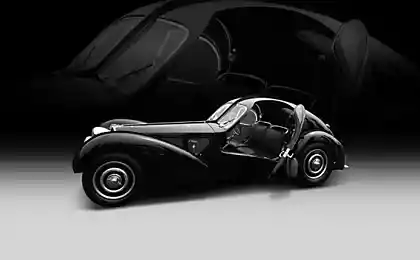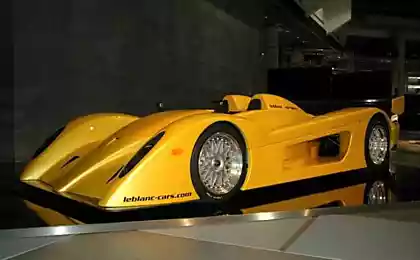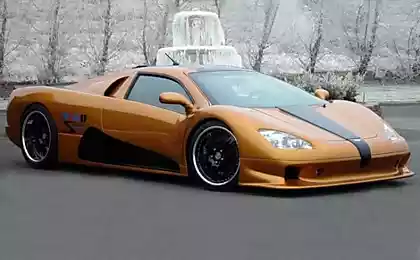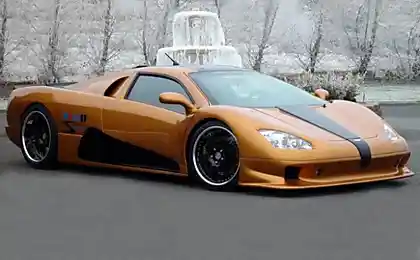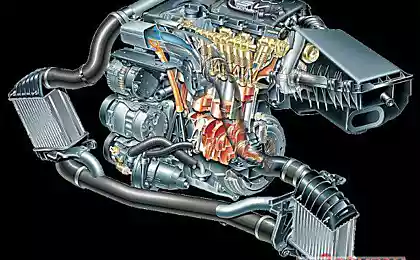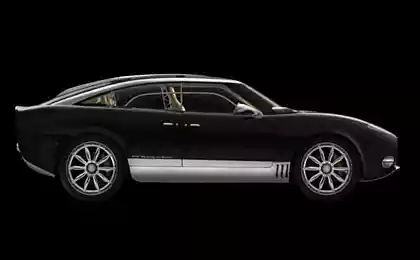522
Koenigsegg Regera — megabrid from Sweden
When a rich fan speed, whether Arab Sheikh or a Hollywood movie star, decides to get a very fast car, probably the first thing he turns his gaze on the products of the Italian masters from Ferrari and Lamborghini. This is the case, if our hypothetical hero — a novice superknowledge.
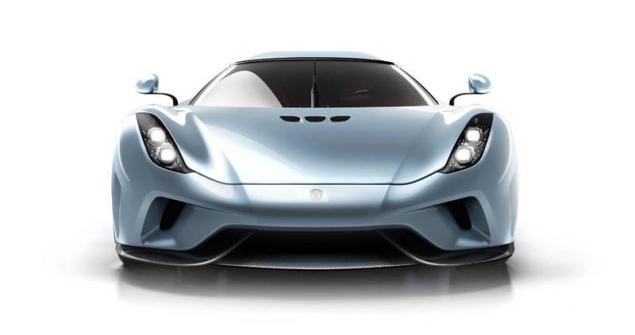
If the fan drive with the wind quite tempted in automotive brands, it think of Pagani, Bugatti and other brands produced mainly in the countries of southern Europe. It was there, according to the broad automotive community, producing the most "hot" machine on the planet. And what about the northerners? Or they are alien to the art of creating "adrenaline" car for Overspeed come into conflict with their slow, but practical and solid, nature?
North — the birthplace of reliable, comfortable, safe, economical and practical VOLVO and Scandia. Sometimes, it is true that here were born with something "loaded", like SAAB 9-5 AERO. Where have you gone mark SAAB? Give me the answer. Is not the answer. Only the muffled echoes from the great wall, is heard somewhere at the other end of Eurasia...
However, the northerners from time to time demonstrate the ability to create something, which even the most rabid fans to drive the arrow of a speedometer in the area of the fourth "hundred" Yes suddenly manifest signs of the presence of common sense will arise in the soul the question: "are human to cope with the sort of strength?". This "something" is called "Koenigsegg Regera" is a novelty, a small Swedish manufacturer presented at the Geneva motor show 2015.
Car manufactured by Koenigsegg based in the city of Margretetorp (Margretetorp), in the South of Sweden. A relatively young firm, demonstrated to the world that not only in Maranello and Munich are able to collect fast cars and powerful engines and not always “ the size of the [ annual budget ] matters.” The company, founded by Christian von Koenigsegg in 1994, employs 24 people. Its annual turnover is ridiculous, from the point of view of the leaders of the global automotive industry, 10 million euros. However, almost any product Koenigsegg “will do” on the track, almost any product from any of their competitors.
So, meet the Koenigsegg Regera.
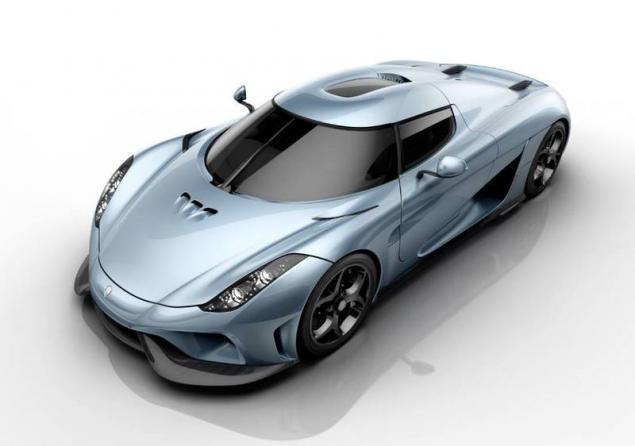
Power — 1800 horsepower with a curb weight just over 1,500 kg. Maximum speed of 440 kilometers per hour. Acceleration to "hundreds" of 2.8 seconds. However, with such characteristics it is better to just talk about speed acceleration from zero to 400 kilometers per hour. It will take — pabam - about twenty seconds!!!
For such a monster the definition of "supercar" looks too small — it usually wear model, greatly inferior to the Regera characteristics. For “Swede” is more appropriate term “megakar”.

The car contains a list of unique innovations. The design of the transmission, or rather the lack of it, in the usual sense. On Regera no transmission. Instead, the system from a single 5-litre petrol V8 engine and three electric motors. They are managed by the electronic system Koenigsegg Direct Drive. Technical solution allows to reduce by half the loss from friction that occurs when the conventional powertrain.
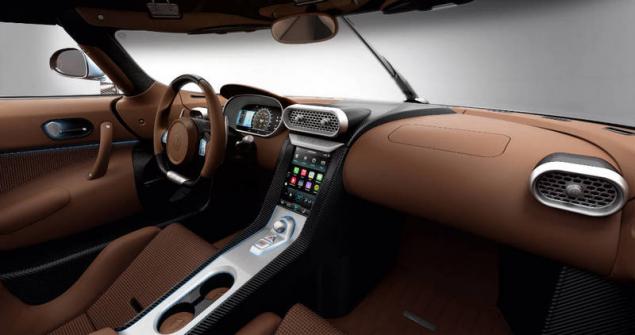
In the end, first, we get significant improvements in efficiency of power units. Secondly, the right to be called Regera most powerful hybrid vehicle in history. One of the advantages of the electric motor before the petrol sibling is its prodigious torque, implemented from the first turn that gives heavy acceleration from any speed. The new brainchild of Koenigsegg accelerates 150 km / h to 250 km\h in just 3.2 seconds. Any overtaking car will be done almost by force of thought — only one eye on the gas pedal. To provide electricity to the Koenigsegg Regera, the designers developed a new lightweight and compact battery that provides the operating voltage of 620 volts. Another absolute record for production cars! Professionals in the field of aerodynamics had to work hard to "land fighter" is well overcome air resistance and not been tempted away into the sky. The downforce component of the speed of 200 kilometers per hour more than impressive 485 pounds, securely presses megakar to the ground. The stability of the vehicle provides a unique system that control the degree of lift of the wing and other aerodynamic elements of the body. On Regera is, even the slats, which have long been known to the world of aviation and automotive engineering have found a place on the Swedish monster. Still — at such speeds... would be a service to the fictitious buyer, mention of which we started our story about the Koenigsegg Regera. Try to compare a vehicle from Margretetorp its competition. The first problem is that competitors have a “Swede” is not. Hybrid super/Hyper/megaceros with similar characteristics not yet produced any one company in the world, except the Koenigsegg. So, if our potential buyer concerned about the reduction of emissions in the global atmosphere other choice but Regera. Otherwise, you will have to compare the Swedish model conventional gasoline vehicles. Close in its capabilities to Koenigsegg is the brainchild of Ferrari F12 Berlinetta Mansory La Revoluzione, which is equipped with engine capacity of 1200 horsepower with a weight of 1500 kg. “Italian” accelerates to 100 km in 2.9 seconds. ("maximum speed" — 370 km / h.). Besides having the legendary name in the Italian asset model is refined handling on the track, a consequence of the enormous experience accumulated by the brand on the tracks of Formula 1. Many people call this vehicle is the civilian version of the car, "Royal races". This factor becomes decisive in the choice for many buyers. Where is Ferrari, there and their main rival a Lamborghini. The creators crammed in Aventador LP1600-4 Mansory Carbonado GT (love is still the Italians long pretentious name!), as many as 1600(!) horsepower. Thanks to them, the car accelerates to 100 km / h in 2.1 sec. The maximum speed is 370 km / h. The Bugatti Veyron is another solid competitor of the Koenigsegg Regera. Until 2013, he owned the title of “the fastest production car in the world”( 431 km/h). The circulation of this model was 150 copies. The hallmark of the Bugatti Veyron is a 16-cylinder superdigital capacity of 1001 horsepower (there is a modification to 1200 l / s). Theoretically the fruit of Italo-German cooperation could outpace the Regera at dispersal to 100 km / h. Passport to dial first "hundred" the Veyron will go up to 2.5 seconds. However, as is actually the case, it will be possible to learn only on the track. Spoils “ badass” image models cost 1.65 million euros to infinity one discreet its creators fact: in the production of Veyron was used the technical know-how and even aggregates from the mass models of Audi and Volkswagen. What to do: there where the Germans, there is always the practicality and feasibility of wins “show-off” and the senseless squandering of funds. On the other hand, it should be nice owners of mass brands to realize that they own a part of automotive legends. Moreover, the Bugatti Veyron is already out of production. The German tuning company Brabus has released a competitor to the above models under the name “ SLR McLaren V10 Quad-Turbo Brabus White Gold” ( what we were talking about “pretentious Italian names”?). “Pumped” by the Germans, the British, equipped with propulsion V10 volume of 8.4 liters with four turbines. The engine is capable of producing 1600 horsepower. However, the manufacturer has installed an electronic speed limiter on a fairly modest for such a riot the power of the mark of 350 km / h. The Germans also said some of the phenomenal number of acceleration to 100 km / h — 2 seconds. Almost like a Formula 1!
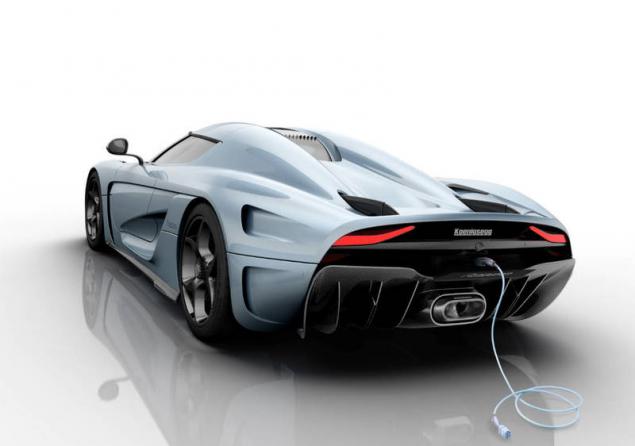
So, to sum up: the Swedish megakar today is among the leaders on the dynamic characteristics, being ahead of competitors in terms of innovation and sustainability. Of special note is the American company "Tesla — one of the world leaders in the field of "electric automobile". Pipelines of the company goes a whole family of electric vehicles of class “luxury”. The flagship brand, Tesla Model S P85D with a capacity of 700 horsepower, close to the dynamic performance of the Regera, acceleration to first hundred in 3.2 seconds. However, to compare these cars is not entirely correct. First, Tesla is a”pure” electric vehicle. It does not set the internal combustion engine. Secondly, price ranges, brands are totally different. Tesla, though expensive, but still a mass product. The price of cars in USA in 2015 is from $60 000 to $70 000. For the overseas market is a lot — about the same cost there's a new Mercedes GL-Class.
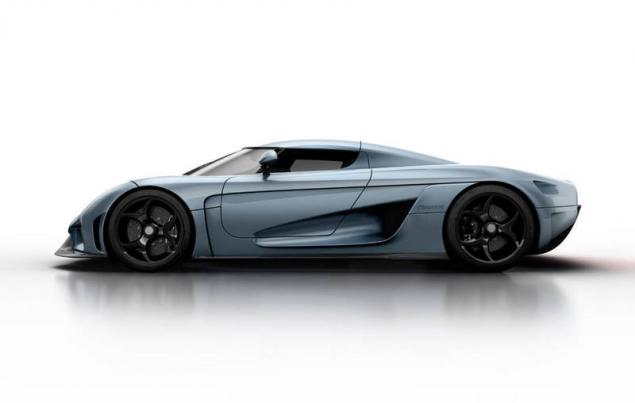
However, the Koenigsegg Regera will cost future owners many times over. While the exact price of the car is unknown. Presumably, we are talking about the amount of 2 000 000 EUR for one copy of the very limited edition of only 80 pieces. Thus, each of the 1,800 horses hiding under the hood of the Swedish megakar will cost future owner in 1111 euros. Not so expensive, to comfort, our fictional buyer, when compared with prices of live thoroughbred horses. published
P. S. And remember, only by changing their consumption — together we change the world! ©
Join us in Facebook , Vkontakte, Odnoklassniki
Source: scandinews.fi/business/story/446-koenigsegg-regera-megagibrid-iz-shveczii

If the fan drive with the wind quite tempted in automotive brands, it think of Pagani, Bugatti and other brands produced mainly in the countries of southern Europe. It was there, according to the broad automotive community, producing the most "hot" machine on the planet. And what about the northerners? Or they are alien to the art of creating "adrenaline" car for Overspeed come into conflict with their slow, but practical and solid, nature?
North — the birthplace of reliable, comfortable, safe, economical and practical VOLVO and Scandia. Sometimes, it is true that here were born with something "loaded", like SAAB 9-5 AERO. Where have you gone mark SAAB? Give me the answer. Is not the answer. Only the muffled echoes from the great wall, is heard somewhere at the other end of Eurasia...
However, the northerners from time to time demonstrate the ability to create something, which even the most rabid fans to drive the arrow of a speedometer in the area of the fourth "hundred" Yes suddenly manifest signs of the presence of common sense will arise in the soul the question: "are human to cope with the sort of strength?". This "something" is called "Koenigsegg Regera" is a novelty, a small Swedish manufacturer presented at the Geneva motor show 2015.
Car manufactured by Koenigsegg based in the city of Margretetorp (Margretetorp), in the South of Sweden. A relatively young firm, demonstrated to the world that not only in Maranello and Munich are able to collect fast cars and powerful engines and not always “ the size of the [ annual budget ] matters.” The company, founded by Christian von Koenigsegg in 1994, employs 24 people. Its annual turnover is ridiculous, from the point of view of the leaders of the global automotive industry, 10 million euros. However, almost any product Koenigsegg “will do” on the track, almost any product from any of their competitors.
So, meet the Koenigsegg Regera.

Power — 1800 horsepower with a curb weight just over 1,500 kg. Maximum speed of 440 kilometers per hour. Acceleration to "hundreds" of 2.8 seconds. However, with such characteristics it is better to just talk about speed acceleration from zero to 400 kilometers per hour. It will take — pabam - about twenty seconds!!!
For such a monster the definition of "supercar" looks too small — it usually wear model, greatly inferior to the Regera characteristics. For “Swede” is more appropriate term “megakar”.

The car contains a list of unique innovations. The design of the transmission, or rather the lack of it, in the usual sense. On Regera no transmission. Instead, the system from a single 5-litre petrol V8 engine and three electric motors. They are managed by the electronic system Koenigsegg Direct Drive. Technical solution allows to reduce by half the loss from friction that occurs when the conventional powertrain.

In the end, first, we get significant improvements in efficiency of power units. Secondly, the right to be called Regera most powerful hybrid vehicle in history. One of the advantages of the electric motor before the petrol sibling is its prodigious torque, implemented from the first turn that gives heavy acceleration from any speed. The new brainchild of Koenigsegg accelerates 150 km / h to 250 km\h in just 3.2 seconds. Any overtaking car will be done almost by force of thought — only one eye on the gas pedal. To provide electricity to the Koenigsegg Regera, the designers developed a new lightweight and compact battery that provides the operating voltage of 620 volts. Another absolute record for production cars! Professionals in the field of aerodynamics had to work hard to "land fighter" is well overcome air resistance and not been tempted away into the sky. The downforce component of the speed of 200 kilometers per hour more than impressive 485 pounds, securely presses megakar to the ground. The stability of the vehicle provides a unique system that control the degree of lift of the wing and other aerodynamic elements of the body. On Regera is, even the slats, which have long been known to the world of aviation and automotive engineering have found a place on the Swedish monster. Still — at such speeds... would be a service to the fictitious buyer, mention of which we started our story about the Koenigsegg Regera. Try to compare a vehicle from Margretetorp its competition. The first problem is that competitors have a “Swede” is not. Hybrid super/Hyper/megaceros with similar characteristics not yet produced any one company in the world, except the Koenigsegg. So, if our potential buyer concerned about the reduction of emissions in the global atmosphere other choice but Regera. Otherwise, you will have to compare the Swedish model conventional gasoline vehicles. Close in its capabilities to Koenigsegg is the brainchild of Ferrari F12 Berlinetta Mansory La Revoluzione, which is equipped with engine capacity of 1200 horsepower with a weight of 1500 kg. “Italian” accelerates to 100 km in 2.9 seconds. ("maximum speed" — 370 km / h.). Besides having the legendary name in the Italian asset model is refined handling on the track, a consequence of the enormous experience accumulated by the brand on the tracks of Formula 1. Many people call this vehicle is the civilian version of the car, "Royal races". This factor becomes decisive in the choice for many buyers. Where is Ferrari, there and their main rival a Lamborghini. The creators crammed in Aventador LP1600-4 Mansory Carbonado GT (love is still the Italians long pretentious name!), as many as 1600(!) horsepower. Thanks to them, the car accelerates to 100 km / h in 2.1 sec. The maximum speed is 370 km / h. The Bugatti Veyron is another solid competitor of the Koenigsegg Regera. Until 2013, he owned the title of “the fastest production car in the world”( 431 km/h). The circulation of this model was 150 copies. The hallmark of the Bugatti Veyron is a 16-cylinder superdigital capacity of 1001 horsepower (there is a modification to 1200 l / s). Theoretically the fruit of Italo-German cooperation could outpace the Regera at dispersal to 100 km / h. Passport to dial first "hundred" the Veyron will go up to 2.5 seconds. However, as is actually the case, it will be possible to learn only on the track. Spoils “ badass” image models cost 1.65 million euros to infinity one discreet its creators fact: in the production of Veyron was used the technical know-how and even aggregates from the mass models of Audi and Volkswagen. What to do: there where the Germans, there is always the practicality and feasibility of wins “show-off” and the senseless squandering of funds. On the other hand, it should be nice owners of mass brands to realize that they own a part of automotive legends. Moreover, the Bugatti Veyron is already out of production. The German tuning company Brabus has released a competitor to the above models under the name “ SLR McLaren V10 Quad-Turbo Brabus White Gold” ( what we were talking about “pretentious Italian names”?). “Pumped” by the Germans, the British, equipped with propulsion V10 volume of 8.4 liters with four turbines. The engine is capable of producing 1600 horsepower. However, the manufacturer has installed an electronic speed limiter on a fairly modest for such a riot the power of the mark of 350 km / h. The Germans also said some of the phenomenal number of acceleration to 100 km / h — 2 seconds. Almost like a Formula 1!

So, to sum up: the Swedish megakar today is among the leaders on the dynamic characteristics, being ahead of competitors in terms of innovation and sustainability. Of special note is the American company "Tesla — one of the world leaders in the field of "electric automobile". Pipelines of the company goes a whole family of electric vehicles of class “luxury”. The flagship brand, Tesla Model S P85D with a capacity of 700 horsepower, close to the dynamic performance of the Regera, acceleration to first hundred in 3.2 seconds. However, to compare these cars is not entirely correct. First, Tesla is a”pure” electric vehicle. It does not set the internal combustion engine. Secondly, price ranges, brands are totally different. Tesla, though expensive, but still a mass product. The price of cars in USA in 2015 is from $60 000 to $70 000. For the overseas market is a lot — about the same cost there's a new Mercedes GL-Class.

However, the Koenigsegg Regera will cost future owners many times over. While the exact price of the car is unknown. Presumably, we are talking about the amount of 2 000 000 EUR for one copy of the very limited edition of only 80 pieces. Thus, each of the 1,800 horses hiding under the hood of the Swedish megakar will cost future owner in 1111 euros. Not so expensive, to comfort, our fictional buyer, when compared with prices of live thoroughbred horses. published
P. S. And remember, only by changing their consumption — together we change the world! ©
Join us in Facebook , Vkontakte, Odnoklassniki
Source: scandinews.fi/business/story/446-koenigsegg-regera-megagibrid-iz-shveczii
Grandpa's wisdom is relevant for every day
Christmas fruitcake with dried fruits: recipes of the Old world
